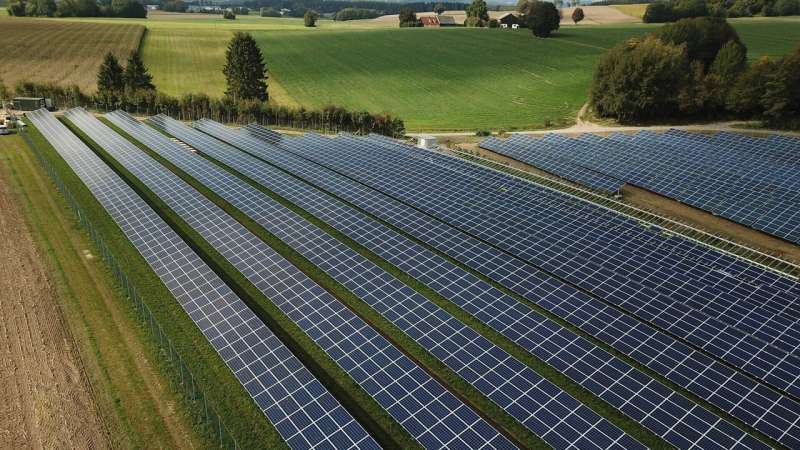This article has been reviewed according to Science X's editorial process and policies. Editors have highlighted the following attributes while ensuring the content's credibility:
fact-checked
trusted source
proofread
Rapid decarbonization can steer Australia to net zero before 2050: Report

A new report by CSIRO, Australia's national science agency, shows existing technologies will enable Australia to halve emissions by 2030 from 2020 levels, under a rapid decarbonization scenario led by a renewable electricity sector.
The report, "Pathways to Net Zero Emissions—An Australian Perspective on Rapid Decarbonization," emphasizes that an accelerated transition is needed across the economy if we are to meet the goal of net zero before 2050 and limit global warming to 1.5°C.
CSIRO's Rapid Decarbonization scenario projects key milestones in 10-year timesteps that would set Australia on a path to net zero by 2050.
Using existing technologies, Australia can reduce emissions by 52% from 2020 levels by 2030. Beyond that, however, technologies currently in early development would need to be in widespread commercial use into the 2030s and 2040s, particularly to address hard-to-abate sectors.
The investment costs will be substantial, and the role of the finance sector will be critical.
CSIRO's Executive Director—Environment, Energy and Resources Dr. Peter Mayfield said there were immense opportunities for Australia to grow new and existing industries and provide essential innovation to decarbonize the world.
"Pressure is mounting for business to speed up its efforts towards net zero and lead the way for the rest of the country. How to move faster to deliver a cleaner, sustainable and strong economy is the question on every business leader's mind," he said.
"This work will help business find a rapid and achievable pathway to net zero appropriate to their sector—guiding investment to mitigate climate change, reinventing industries of old, and creating new jobs in emerging industries."
CSIRO researchers applied to an Australian context the International Energy Agency's global analysis of the technology, energy and investment needed to limit global warming to 1.5°C.
It's the first time that IEA's detailed international modeling has been coupled with CSIRO's detailed knowledge of Australian industry to inform decarbonization projections of the economy in this way.
Modeling focused on the high emissions sectors of the economy to develop transition pathways across energy, transport, building and heavy industry, including steel, cement and aluminum; alongside agriculture, the largest energy emitters in the economy.
The report's Rapid Decarbonization scenario projects the national effort will be led by a renewable electricity sector:
- Renewable sources would need to triple by 2030 to reach 90% of the electricity generation mix. To achieve this, almost all new capacity installed in the next decade would need to come from wind, solar and hydropower supported by increased storage capacity.
- Rapid electricity sector decarbonization is projected to drive down emissions from energy use in housing and commercial buildings, followed by electrification in mining, and later in transport. This highlights the need for more renewable electricity sooner.
- By 2040, 73% of cars and light commercial vehicles on the road are electric powered. Decarbonization of long distance and heavy transport accelerates through 2030–2040.
To lag behind international decarbonization would be a competitive disadvantage for Australia as other nations increasingly adopt low emissions technologies and trade barriers towards high emitting nations.
The report will support evidence-based decision making for CBA, its clients and the banking and business sectors more broadly.
More information: Building sector fact sheet: www.csiro.au/-/media/Environme … t_BuildingSector.pdf
Electricity sector fact sheet: www.csiro.au/-/media/Environme … lectricitySector.pdf
Heavy industry fact sheet: www.csiro.au/-/media/Environme … rt_HeavyIndustry.pdf
Transport fact sheet: www.csiro.au/-/media/Environme … Report_Transport.pdf
Provided by CSIRO





















